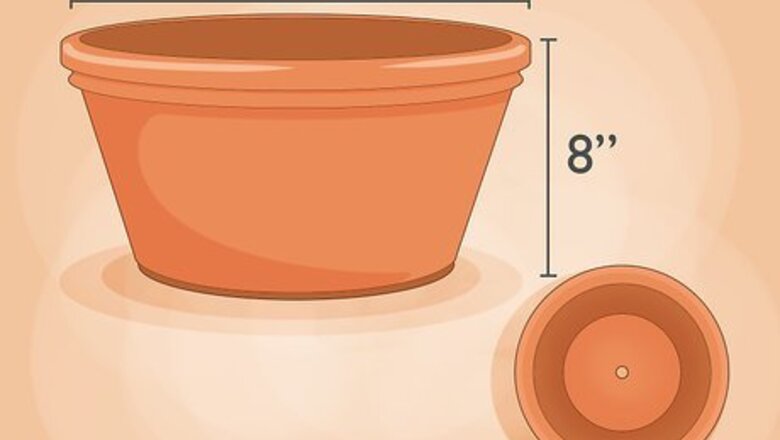
views
Creating the Best Indoor Conditions

Select a container at least 8 inches (20 cm) deep to prevent crowding. Carrots need a lot of depth in order to grow properly. When growing carrots in containers, those containers need to be at least 8 inches (20 cm) deep and 12 inches (30 cm) in diameter. Any type of container can be used to grow carrots, as long as they’re large enough not to crowd the carrots while they’re growing. Ensure each container has drainage holes in the bottom. If the container doesn’t already have holes, you can use a drill to make the holes. Put each container on top of a saucer or tray to catch the water as it drains from the container.
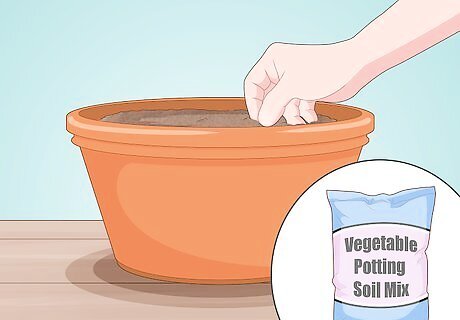
Purchase a potting soil mix made specifically for vegetables. Use your hands or a handheld gardening shovel to fill each container with vegetable potting soil mix. Fill each container so that there is only an inch (2.5 cm) of space between the soil and the top of the container. Do not use soil from your garden outside; it will not have enough of the proper nutrients to successfully grow your carrots. Look for a potting soil mix with a pH between 6.0 and 6.8. Carrots prefer soil that is light, sandy, and loamy.

Pick a cool area with 6 hours of sun to put your containers. Carrots prefer cool temperatures between 10 °C (50 °F) and 18 °C (64 °F) in which to thrive. They also need at least 6 hours of sunlight per day. Therefore, find a location in your home that is both regularly cool and has a lot of sunlight where the containers can sit for 2-3 months until you can harvest your carrots. Carrots do not do well when the temperatures fluctuate. Keep your carrots away from doors or vents where the temperature changes often.

Install grow lights if you don't get enough sunlight indoors. If there is no location in your home that gets 6 hours of sunlight per day, you can use grow lights as an alternative. Ensure that either the lights themselves or the containers can be moved up and down so that the carrots can be moved further from the lights once they start to grow. Leave the grow lights on long enough every day so that your carrots get at least 6 hours of light. Grow lights are specialized bulbs that produce a light spectrum similar to that of the sun, which will interact with your carrot plants to help them grow (via photosynthesis). Grow lights can be purchased at any hardware or garden store or online. You can either use grow lights in place of or in addition to natural light. Use a timer for your grow light so you do not have to remember when to turn them on and off.
Sowing Your Carrot Seeds
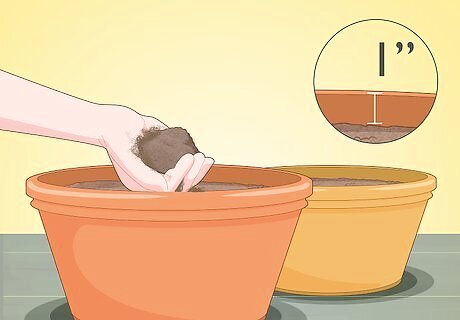
Fill each container with potting soil mix. Each container in which you want to sow carrots will need to be filled with potting soil mix, almost to the top. Leave only 1 inch (2.5 cm) of space at the top of each container. Add some water to the soil after filling the container. If the water causes the soil to compress, add more soil until it’s up to the proper level. Read the instructions on your bag of vegetable potting soil mix in case there are any unique steps required. Keep leftover potting mix and use it to top up the containers if the soil becomes compressed as the carrots grow.
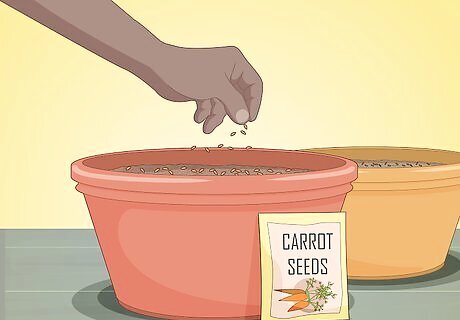
Sprinkle carrot seeds in each container. Sow your carrot seeds in each container by sprinkling the seeds carefully on top of the soil. Carrot seeds do not need to be buried in the soil. Carrot seeds are also very small and hard to see, therefore it may be hard to tell how many seeds you’ve used–that’s okay. Once the seeds are in each container, sprinkle water lightly onto the seeds. Any variety of carrots can be grown indoors. In fact, you can mix multiple varieties of carrot seeds together to sow in your containers. Carrot seeds can be purchased at a garden centre or online. Some carrot seeds may come ‘coated.’ This coating simply makes the seeds larger and easier to see; it doesn’t impact the seed itself.
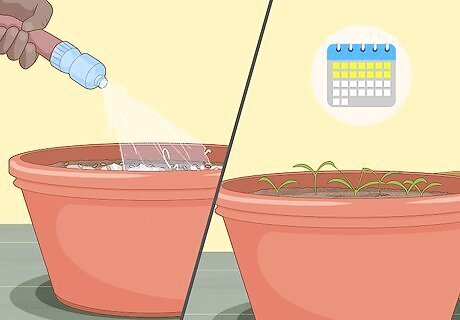
Water your carrot seeds regularly and watch them sprout. Carrot seeds will take about 14-17 days to sprout. While you’re waiting for your seeds to sprout, ensure they’re getting at least 6 hours of light every day and keep the top layer of soil moist. Use a spray bottle to water the seeds and empty the saucers or trays of excess water immediately. Continue to provide your carrots with 6 hours of light per day and sufficient water after they’ve sprouted.
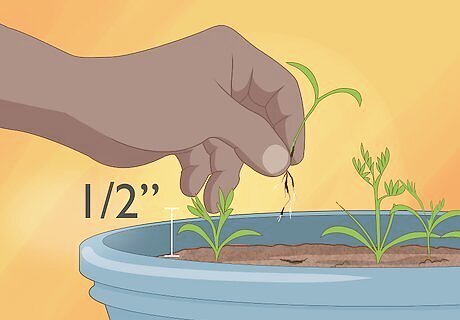
Thin out the sprouts to give each plant enough room to grow. Carrot seeds take about 14-17 days to sprout. Once the carrots have sprouted, thin out the carrot sprouts using scissors such that each remaining sprout has a ⁄2 in (1.3 cm) of space on all sides. Cut the unwanted sprouts right down to the soil; do not pull the unwanted sprouts out of the soil. This step provides as many sprouts as possible the chance to grow successfully. Some, however, may die off before the next thinning step.

Repeat the thinning process when seedlings are 3 inches (7.6 cm) tall. Once the sprouts have grown into 3 in (7.6 cm) seedlings, thin the carrots out again. This time, make sure each seedling has 1 inch (2.5 cm) of space around it on all sides. Use your scissors to cut the unwanted seedlings right down to the soil. The fewer the number of seedlings, the larger each carrot will grow.
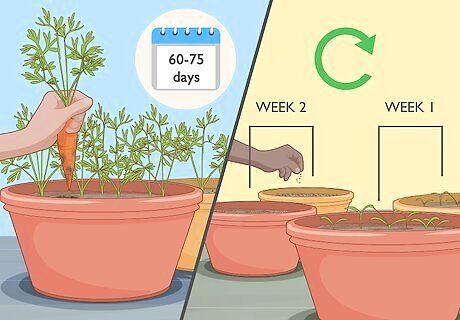
Sow your seeds in intervals to allow your harvest to last longer. Carrots take about 60-75 days to mature. Once they mature, they can be harvested and eaten right away. However, this may provide you with too many carrots at once. Instead of planting all your containers at the same time, plant your containers in intervals to extend your harvest period. For example, if you’re planting 6 containers, sow seeds in 2 containers one week, then sow seeds in another 2 containers a week later, then sow seeds in the last 2 containers a week later. This means you’ll have planted your seeds over a period of 3 weeks.
Taking Care of Your Carrots
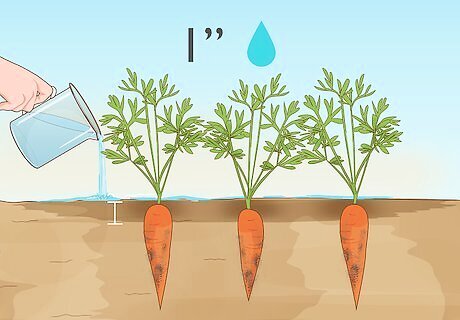
Water your carrots regularly to keep the top layer of soil moist. Use your finger to check the moisture level of the top 1 in (2.5 cm) to 2 inches (5.1 cm) of soil in each container. If the soil is dry, it’s time to water your carrots. Give each container enough water so that the top layer of soil is moist, but not soaked. Excess water may drain from each container after it’s been watered. Empty the saucers or trays as often as possible.
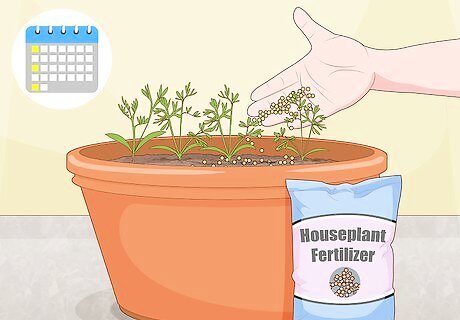
Fertilize your carrots every 2 weeks to keep them healthy. Add regular houseplant fertilizer to each container of carrots every 2 weeks, or as instructed on the bottle. The fertilizer will provide the carrots with the proper nutrients to grow and mature successfully. There is no need to purchase special fertilizer for your carrots, houseplant fertilizer will work just fine. You can purchase liquid houseplant fertilizer at a garden centre or in the plant section of any grocery store.
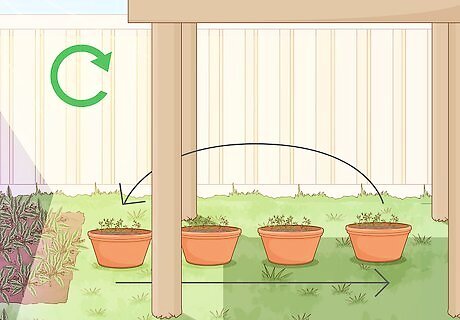
Rotate each container weekly so every plant gets enough sun. At the same time every week, rotate each of your containers a quarter turn clockwise. This will make sure all carrot plants get an equal amount of sunlight while they’re growing. If you notice all your carrot plants are leaning a lot towards the sunlight, you may want to rotate the container more frequently. If you are using grow lights in addition to sunlight and the grow lights are located directly above the containers, you can skip this step.
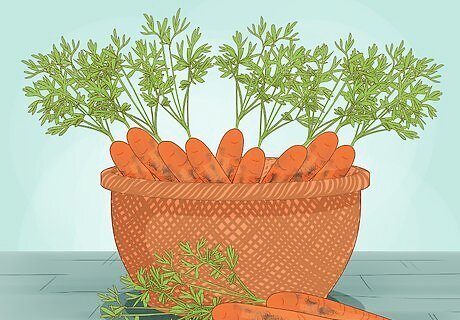
Enjoy your mature carrots after 60 to 75 days. Once your carrots have matured, harvest and enjoy them right away. Start by picking the plants with the biggest and thickest greens, as these will likely be the most mature. Grasp the bottom of the greens, where they connect to the carrot and pull straight up to harvest the carrot. If your carrot doesn’t want to come out easily, you may need to wiggle the carrot a little bit to loosen the soil around the roots.




















Comments
0 comment